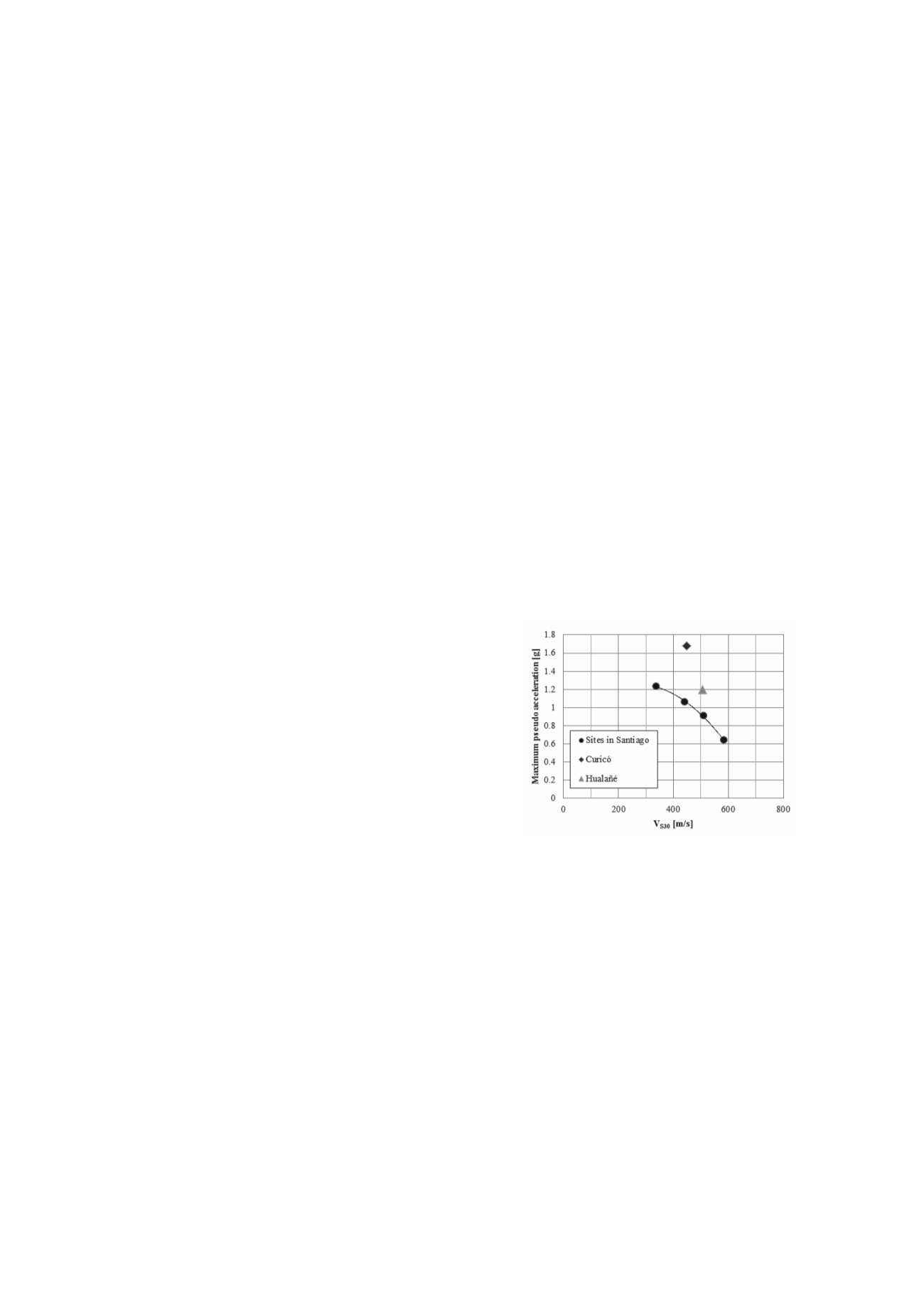
1399
2
nd
General Report for TC 203: Experimental characterization and analysis of soil
behaviour under earthquake loads
2
e
rapport général du TC 203 : Caractérisation expérimentale et analyse du comportement des sols
sous chargement sismique
Silvestri F.
Department of Civil, Architectural and Environmental Engineering, Università di Napoli Federico II, Napoli, Italy
ABSTRACT: This General Report is addressed to resume and comment 32 papers mostly dealing with the characterization of natural
and reconstituted soils under cyclic and dynamic loads reproducing earthquakes in field and laboratory tests, as well as in physical and
numerical models. Predictive models are often assessed on the basis of good quality experimental data and field observations from
post-earthquake damage reconnaissance are also accounted for. The papers have been grouped according to the engineering purpose
of the relevant study, and highlight that the up-to-date technological innovations in geotechnical testing and analysis can nowadays
provide a continuous and tangible improvement to the worldwide effort for seismic risk mitigation.
RÉSUMÉ: Ce Rapport général présente et synthétise les 32 articles portant essentiellement sur la caractérisation des sols naturels et
reconstitués sous chargements cyclique et dynamique reproduisant les conditions d’un séisme dans des essais sur le terrain et en
laboratoire, ainsi qu’en modélisation physique et numérique. Les modèles de prévision sont souvent évalués d’après la qualité des
données expérimentales, mais aussi en tenant compte des observations sur le terrain après reconnaissance des dégâts dus au séisme.
Les articles - regroupés en fonction de leur objectif - soulignent le fait qu’aujourd’hui les innovations technologiques les plus
avancées dans le domaine des tests et des analyses géotechniques peuvent contribuer de façon tangible et continue aux efforts
consentis au niveau mondial pour l’atténuation des risques sismiques.
KEYWORDS: earthquake, soil behaviour, cyclic loads, laboratory testing, physical models, field observations
1 INTRODUCTION
The 32 papers assigned to this session mainly deal with the
characterization of natural and reconstituted soils under cyclic
and dynamic loads reproducing earthquakes as well as other
time-dependent phenomena. Most of them are based on the
results of field and laboratory investigations, these latter
including element and physical model tests. Predictive models
are often assessed on the basis of good quality experimental
data and field observations from post-earthquake damage
reconnaissance are also accounted for. Following a traditional
approach for earthquake geotechnical engineering, they will be
shortly commented subdividing them into 5 sections,
corresponding to relevant engineering issues:
field and laboratory measurement of equivalent soil
parameters (5 papers);
measurement and modeling of cyclic degradation, strength
and liquefaction (11 papers);
liquefaction: empirical methods, field observations and
countermeasures (7 papers);
ground deformation and slope stability (6 papers);
retaining structures (3 papers).
2 FIELD AND LABORATORY MEASUREMENT OF
EQUIVALENT SOIL PARAMETERS
Gonzales et al.
(Chile) analyze ‘Correlations between the shear
wave velocity profile and the response spectrum based on
SASW tests’ carried out on six medium stiff sites, where the
M
W
=8.8 Maule Earthquake (27.02.2010) was recorded. The
Authors observe that in the three sites showing shear wave
velocity inversions, the recorded response spectra are featured
by multiple peaks, which would impose a design spectrum with
a wider plateau. They also discuss the non-univocal correlation
between peak spectral amplitudes and the equivalent velocity
V
S30
(Fig. 1). It is suggested by the writer to better assess the
different roles of input motion and non-linear site amplification
through seismic response analyses.
Figure 1. Peak spectral amplitudes versus V
S30
(
Gonzales et al.
).
Zekkos et al.
(USA) describe an up-to-date methodology for
the ‘In situ assessment of the nonlinear dynamic properties of
Municipal Solid Waste’ using mobile vibroseis shakers. Under
incremental vertical static loads, small-strain crosshole and
downhole tests were performed, along with sinusoidal
horizontal loads with increasing amplitudes applied by the
mobile shakers. The ground motions recorded by the geophones
embedded in the waste were used to evaluate nonlinear stiffness
of MSW throughout a wide shear strain range (0.0002% to
0.2%). The reduction curves of normalized shear modulus,
G/G
max
, were affected by waste grading and, to a lesser extent,
by the increase of confining stress (Fig. 2). This latter induced a
more linear behaviour, similarly to granular soils. It is expected
that this powerful technique will provide interesting results even
in terms of nonlinear in-situ damping.
nd
r l
rt f r
Experimental char cteriz tion nd analysis of soil behaviour under earthquake
loads
2
e
rappo t général du TC 203
Caractérisation expérimentale et analyse du comportement des sols sous chargement
sismique
Silvestri F.
Department of Civil, Architectural and Environmental Engineering, Università di Napoli Federico II, Napoli, Italy


